Revision Notes: The Reproductive System | Biology and Biochemistry for MCAT PDF Download
| Table of contents |

|
| Introduction |

|
| Patterns of Reproduction |

|
| Secondary Sexual Characters |

|
| Reproduction in Humans |

|
| Ovulation: |

|
| Menstrual Cycle: |

|
| Fertilization |

|
| Implantation |

|
| Placenta |

|
| Amnion |

|
| Parturition |

|
Introduction

Reproduction is the process through which new individuals are created, either through sexual or asexual means. These new individuals have the ability to repeat the process on their own.
Patterns of Reproduction
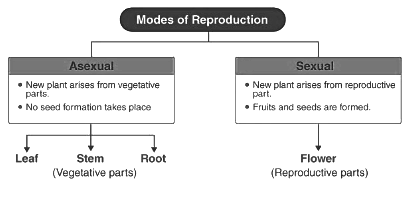
Asexual Reproduction
- In asexual reproduction, any part of the body can be involved in the process.
- This type of reproduction does not involve male and female gametes.
- Asexual reproduction is a straightforward process that primarily involves cell division.
- Examples of asexual reproduction include:
- Binary fission in amoeba: A single-celled organism like amoeba divides into two identical daughter cells.
- Budding in hydra: A new individual develops from a bud on the parent organism, eventually becoming independent.
Sexual Reproduction
- Sexual reproduction involves the fusion of male and female gametes.
- This process is more complex than asexual reproduction and involves the formation of a zygote through fertilization.
- The zygote then develops into a new individual.
- Sexual reproduction is commonly seen in multicellular organisms.
Secondary Sexual Characters

Males and females exhibit distinct outward features known as secondary sexual characters.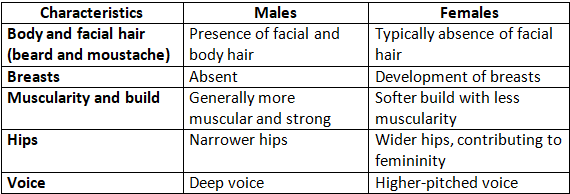
Reproduction in Humans
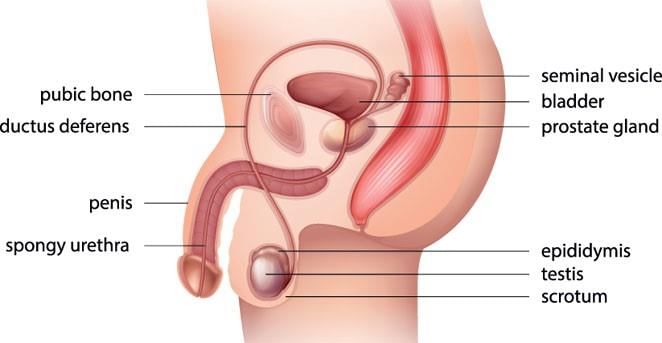
Male Reproductive System
The male reproductive system comprises several organs, including the testes, epididymis, vas deferens, ejaculatory duct, accessory glands (seminal vesicles, prostate gland, bulbo-urethral gland), and the penis.
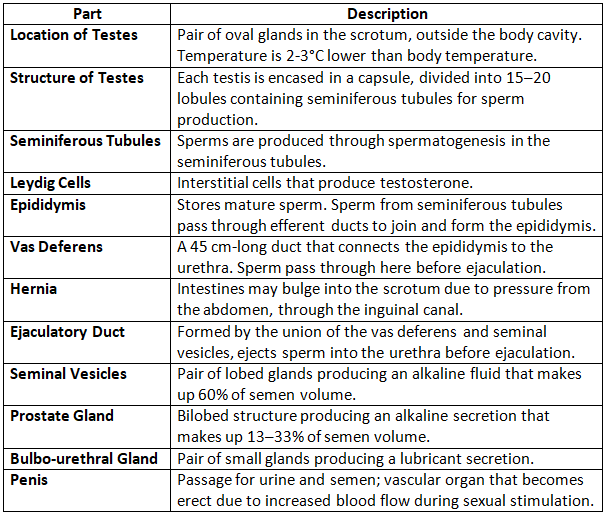
Semen
- Semen is a mixture of sperm and secretions from the prostate and Cowper’s glands.
- It appears as a milky fluid.
Female Reproductive System
The female reproductive system includes the following parts: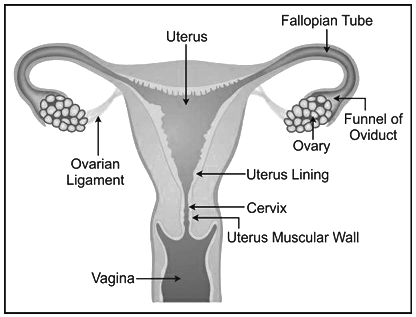
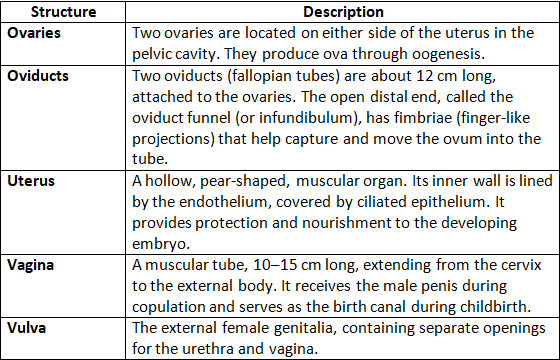
Ovulation:
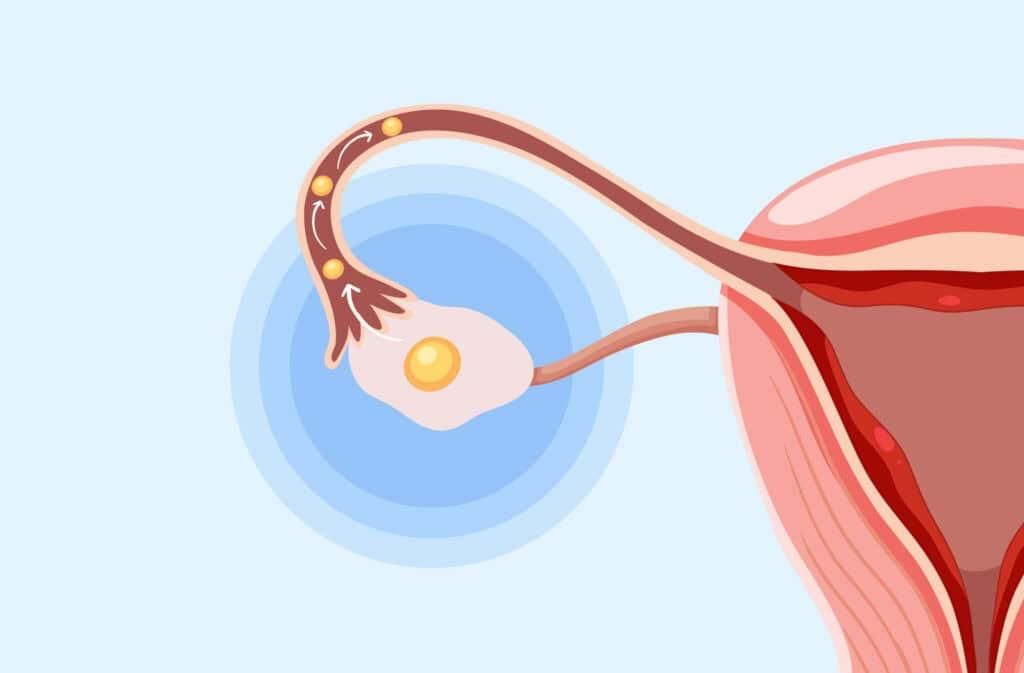
- Ovulation refers to the process in which a mature ovum is released from the ovary when the Graafian follicle ruptures.
- The Graafian follicle breaks open, releasing the ovum into the infundibulum, which is the funnel-shaped end of the fallopian tube.
- After the ovum is released, the remnants of the follicle do not disappear immediately; instead, they transform into a structure known as the corpus luteum, a yellowish mass.
- The corpus luteum is an important endocrine tissue that plays a crucial role in the menstrual cycle and early pregnancy.
- It secretes two key hormones:
- Oestrogen : This hormone is released by the follicle before ovulation occurs. It is involved in various functions, including the regulation of the menstrual cycle and the preparation of the uterus for a potential pregnancy.
- Progesterone : This hormone is secreted by the corpus luteum after ovulation. Its primary role is to prepare the uterus for the implantation of a fertilized embryo, making the uterine environment suitable for early pregnancy.
Menstrual Cycle:
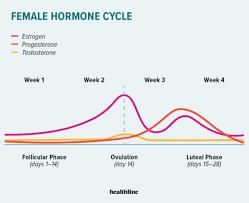
The menstrual cycle is a regular monthly process that occurs in the reproductive period of human females, typically starting around the age of 13 and continuing until about 45 to 50 years of age. This cycle is characterized by a series of hormonal changes and physiological events that prepare the body for a potential pregnancy.
The menstrual cycle consists of several phases:
1. Menstrual Phase:
- Duration: Lasts for 3 to 5 days.
- During this phase, the uterine lining is shed, and blood is discharged from the body.
2. Follicular Phase:
- As the phase progresses, a follicle in the ovary matures into the Graafian follicle.
- The hormone oestrogen stimulates the thickening of the uterine endometrium (the inner lining of the uterus) in preparation for a potential pregnancy.
3. Ovulatory Phase:
- Occurs around the 13th or 14th day of the menstrual cycle.
- The Graafian follicle ruptures, releasing the matured ovum, which then travels down the fallopian tube towards the uterus.
4. Luteal Phase:
- Duration: Lasts for 15 to 28 days.
- During this phase, the uterine lining continues to thicken in preparation for a possible implantation of a fertilized egg.
- The empty follicle transforms into the corpus luteum, which secretes oestrogen and progesterone.
- If fertilization does not occur, the ovum disintegrates, and the endometrial lining begins to shed, marking the start of a new menstrual cycle around the 28th day.
- If fertilization does occur, the embryo implants itself into the uterine wall, and menstrual flow is temporarily halted.
Menarche and Menopause:
- Menarche : Refers to the onset of menstruation in a young female, typically around the age of 13 years. This marks the beginning of the reproductive phase in a female's life.
- Menopause : Refers to the permanent cessation of menstruation, usually occurring around the age of 45 years. This signifies the end of the reproductive phase and is a natural part of the aging process in females.
Puberty:
- Puberty is the developmental period during which the immature reproductive systems of boys and girls mature and become capable of reproduction.
- In both sexes, puberty is associated with the onset of secondary sexual characteristics and increased levels of sex hormones, which play a crucial role in preparing the body for reproductive functions.
Fertilization
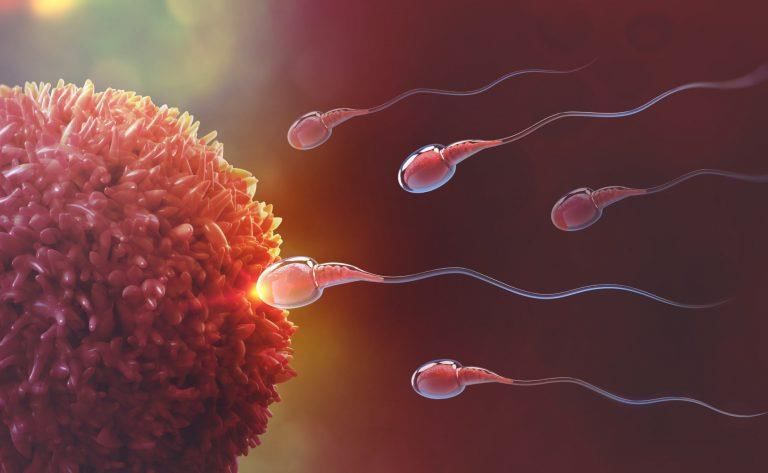
- Fertilization is the process where the male gamete (sperm) and the female gamete (ovum) combine to form a zygote.
- During copulation, sperm is released into the vagina, near the cervix of the uterus. From there, the sperm actively pass through the cervix into the uterine cavity.
- Out of the millions of sperm released, only a few manage to reach the upper parts of the oviducts; the rest die along the way and are absorbed by the body.
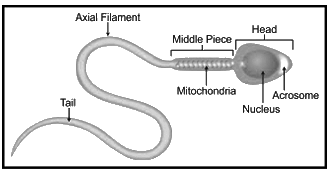
A. Acrosome
- The acrosome is located at the head of the sperm.
- It contains enzymes that help the sperm enter the ovum by dissolving its outer membrane.
B. Nucleus
- The nucleus of the sperm contains genetic material, specifically 22 chromosomes plus either an X or a Y chromosome (22 + X or 22 + Y).
C. Mitochondria
- Mitochondria are found in the middle piece of the sperm.
- They provide the energy (in the form of ATP) necessary for the sperm's swimming activity.
D. Tail
- The tail of the sperm aids in its forward movement, helping it navigate through the cervix.
Implantation
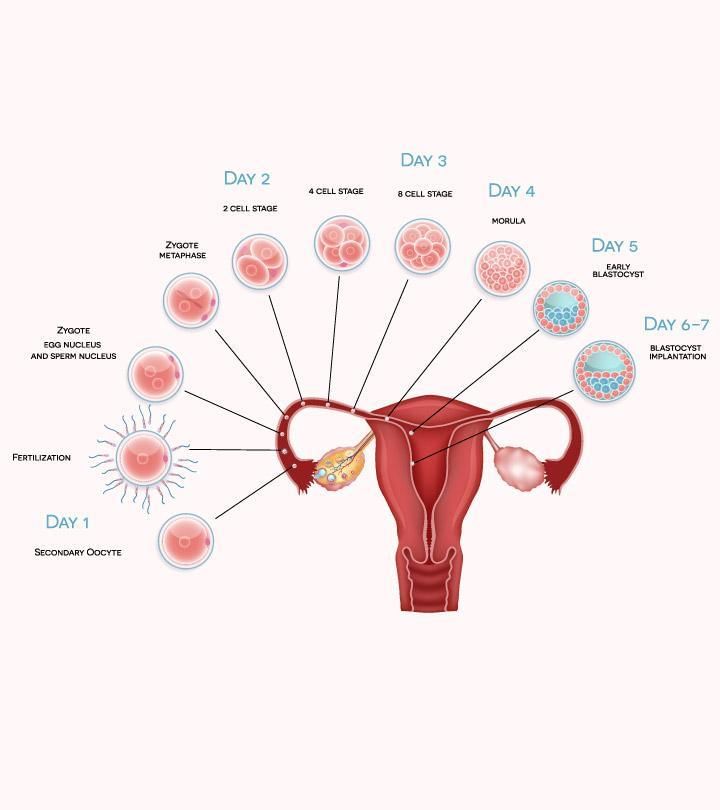
- Implantation is the process in which the developing embryo attaches itself to the endometrial lining of the uterus.
- The embryo refers to a growing egg after fertilization, continuing this stage until the main body parts and internal organs begin to form.
- The term "foetus" is used when the embryo starts to resemble a baby, typically from 7 weeks of gestation onwards.
Placenta
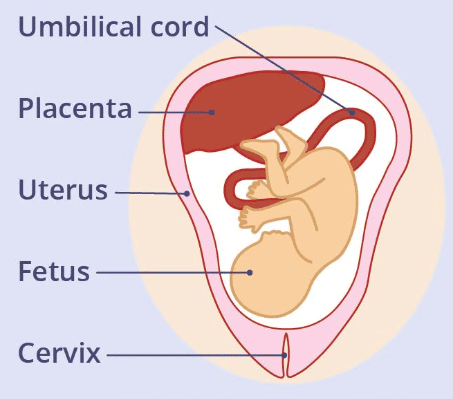
- The placenta is a crucial tissue that provides oxygen and nutrients to the developing foetus while removing waste products like nitrogenous wastes and carbon dioxide.
- It has a disc-like shape and is attached to the uterine wall.
- The placenta is connected to the foetus by the umbilical cord, which contains blood vessels.
- One of the placenta's important functions is to act as a barrier, preventing germs from passing from the mother to the foetus. However, certain viruses, such as HIV, can cross the placenta if the mother is infected.
- Additionally, the placenta produces hormones like oestrogen and progesterone.
Functions of the Placenta
From Mother to Foetus:
- Oxygen
- Amino acids
- Glucose
- Vitamins
- Minerals
- Fats and lipids
From Foetus to Mother:
- Carbon dioxide
- Urea
- Waste products
Amnion
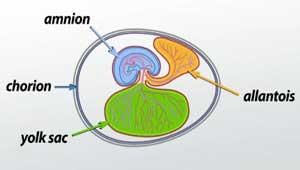
The amnion is a protective sac that forms around the embryo even before the allantois is developed.
- Amniotic Fluid: The space between the amnion and the embryo is filled with amniotic fluid.
- Protection: This fluid acts as a cushion, safeguarding the embryo from physical harm caused by jolts and mechanical shocks.
Parturition
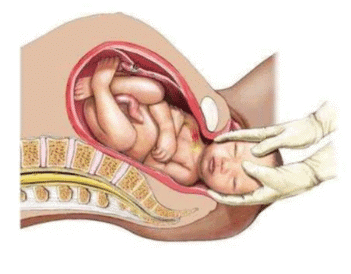
- Gestation: The period of full-term development of an embryo in the uterus is known as gestation, which lasts about 280 days in humans.
- Birth Process: During birth, the baby is expelled from the uterus through contractions of the uterine muscles.
- Umbilical Cord: After a while, the umbilical cord shrinks and can be tied and cut.
- Placenta: About 15 minutes after birth, the placenta separates from the uterus and is expelled.
- Newborn Cry: The newborn typically cries sharply upon birth, indicating the clearing of its respiratory passage.
Fraternal Twins: Fraternal twins occur when two eggs are released from the ovaries simultaneously and both are fertilized.
Identical Twins: Identical twins result from a single fertilized egg splitting during the early stages of cell division, leading to the birth of either two boys or two girls.
Triplets: Triplets can be born from a single zygote, or from two fertilized eggs where one zygote splits, creating identical twins, while the other develops into a normal baby.
Quadruplets: Quadruplets may be formed as two pairs of identical twins, or a combination of identical and fraternal twins.
|
129 videos|59 docs|24 tests
|
FAQs on Revision Notes: The Reproductive System - Biology and Biochemistry for MCAT
| 1. What are the main patterns of reproduction found in different species? |  |
| 2. What are secondary sexual characteristics and their roles in reproduction? |  |
| 3. How does the menstrual cycle regulate ovulation in humans? |  |
| 4. What is the process of fertilization and its significance? |  |
| 5. What is the role of the placenta in human reproduction? |  |














